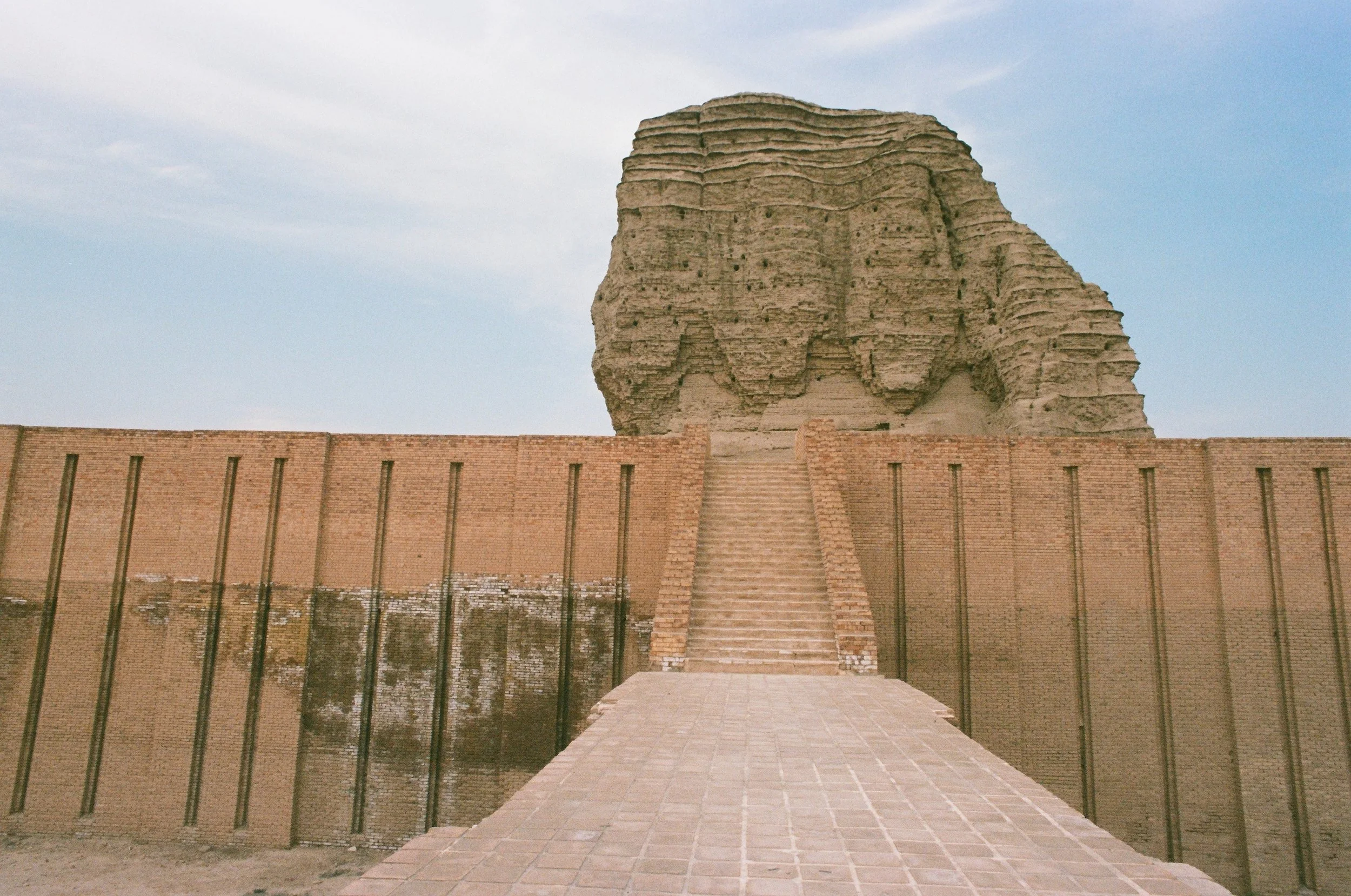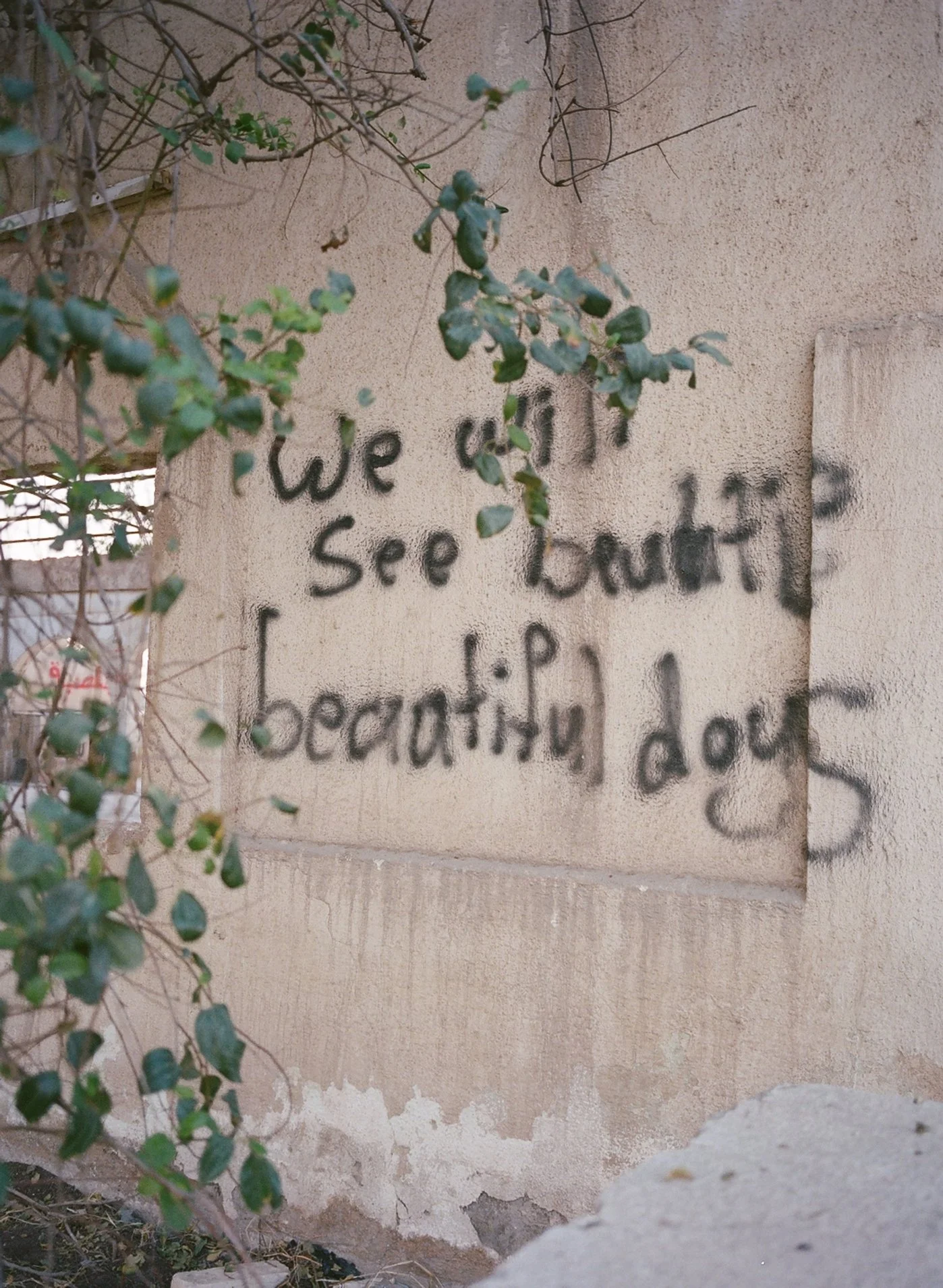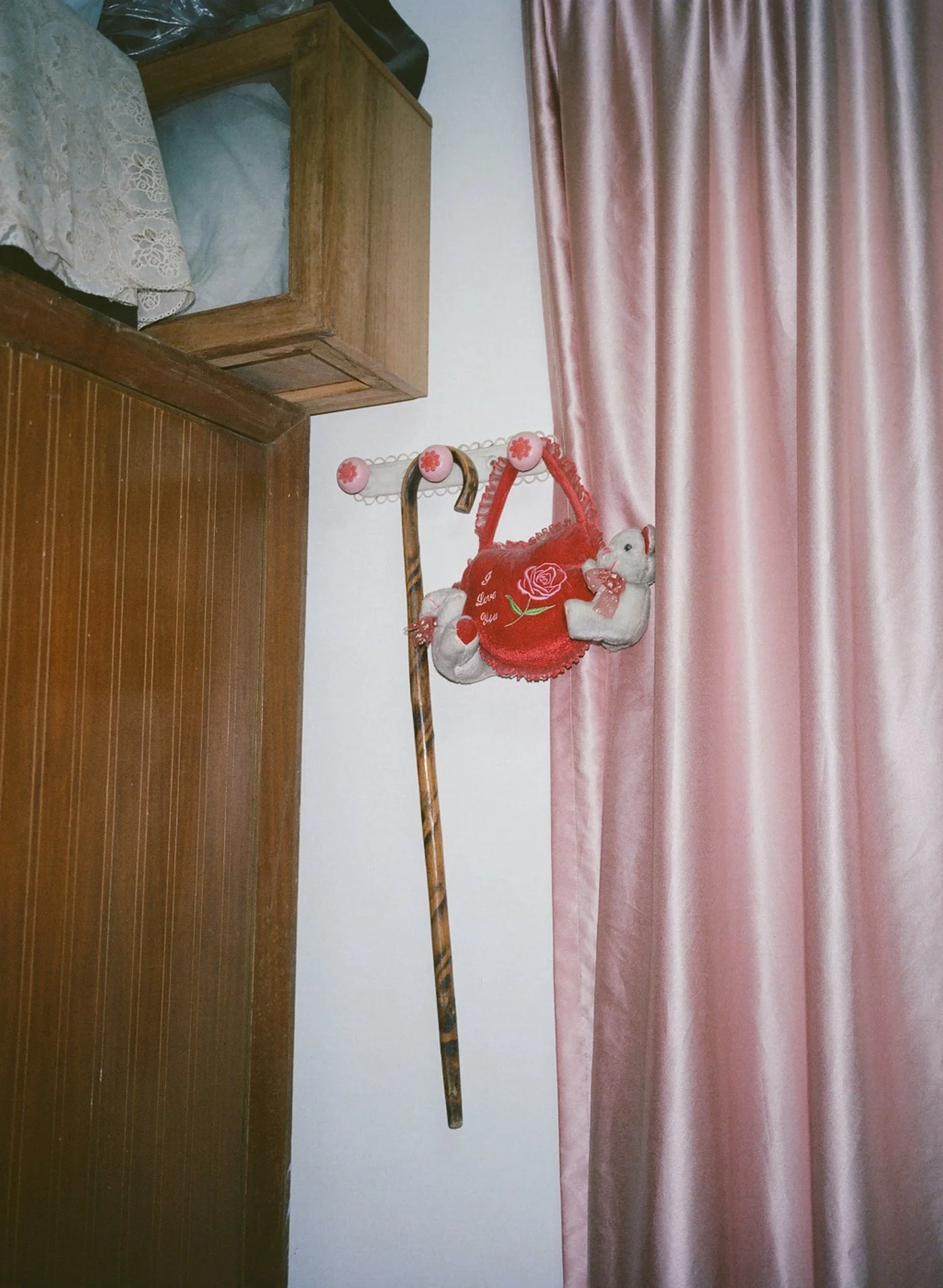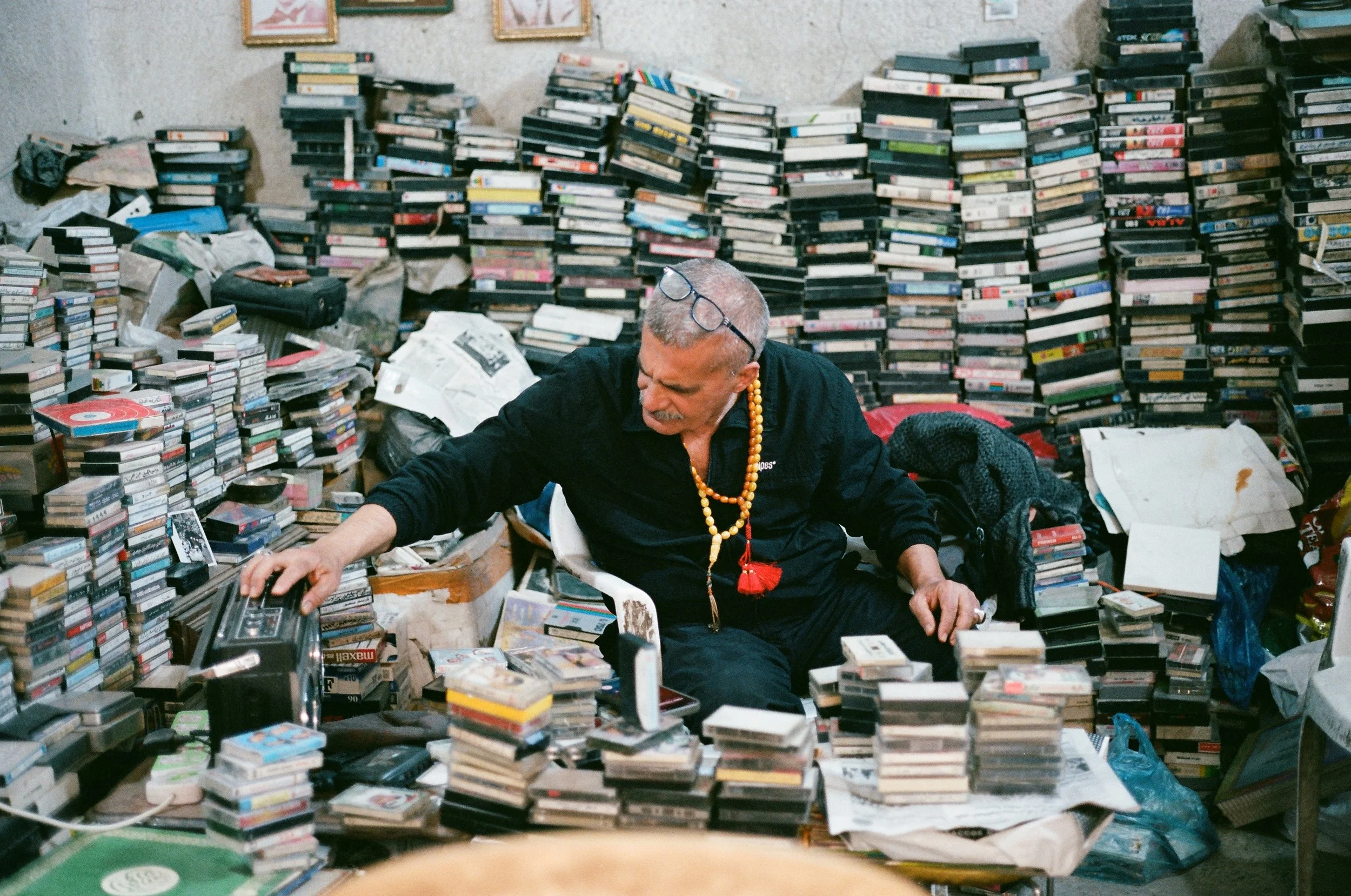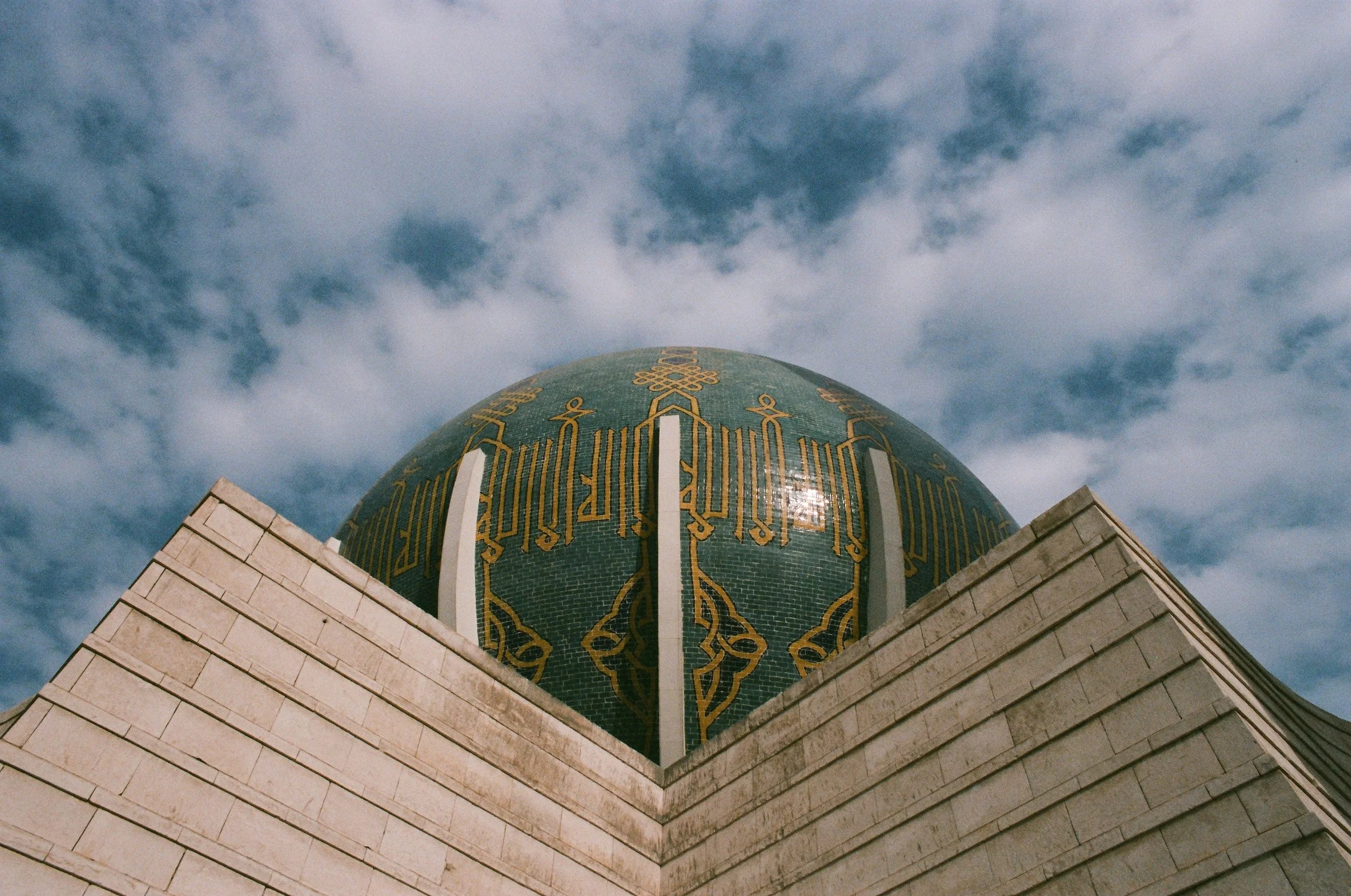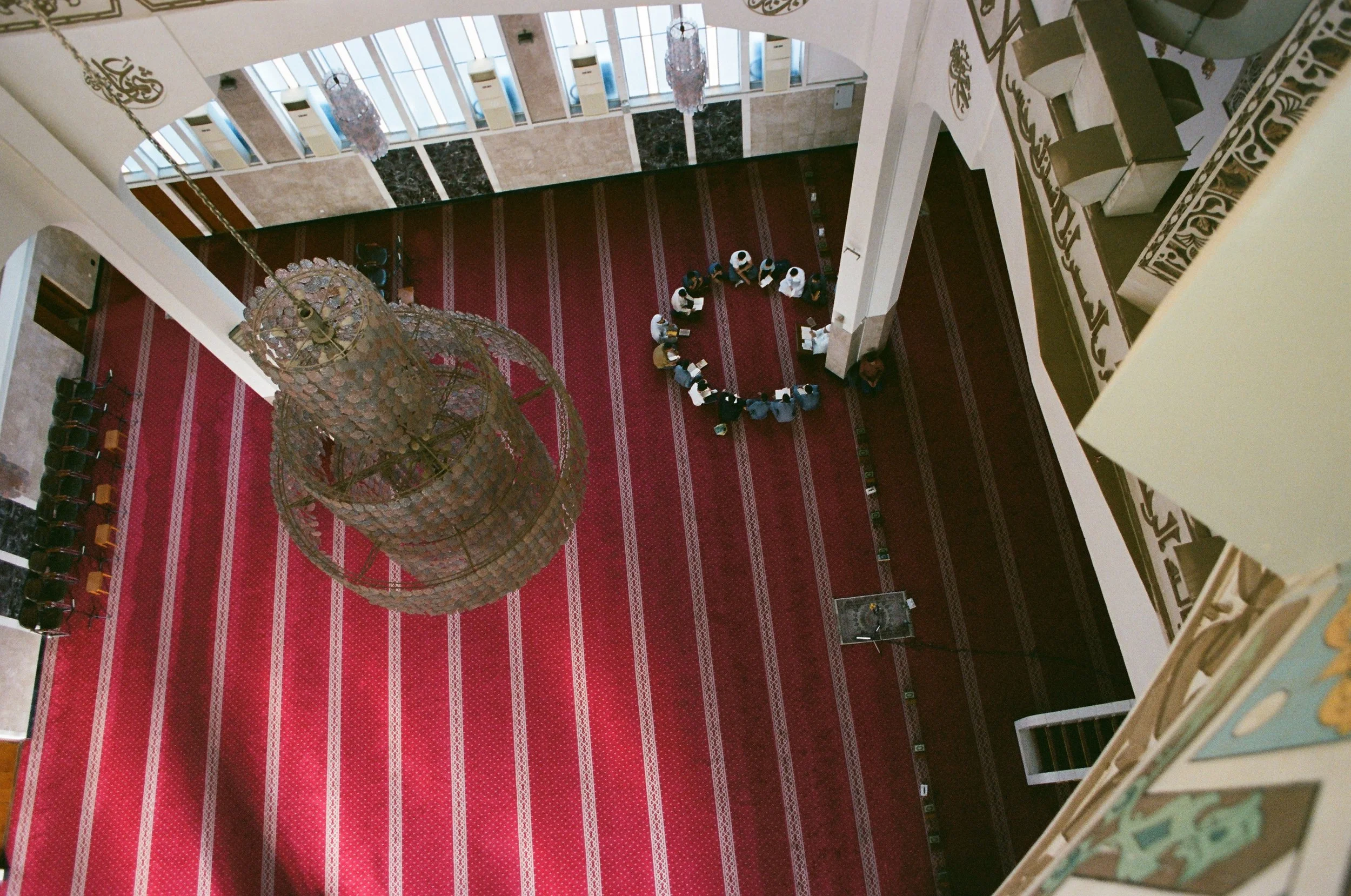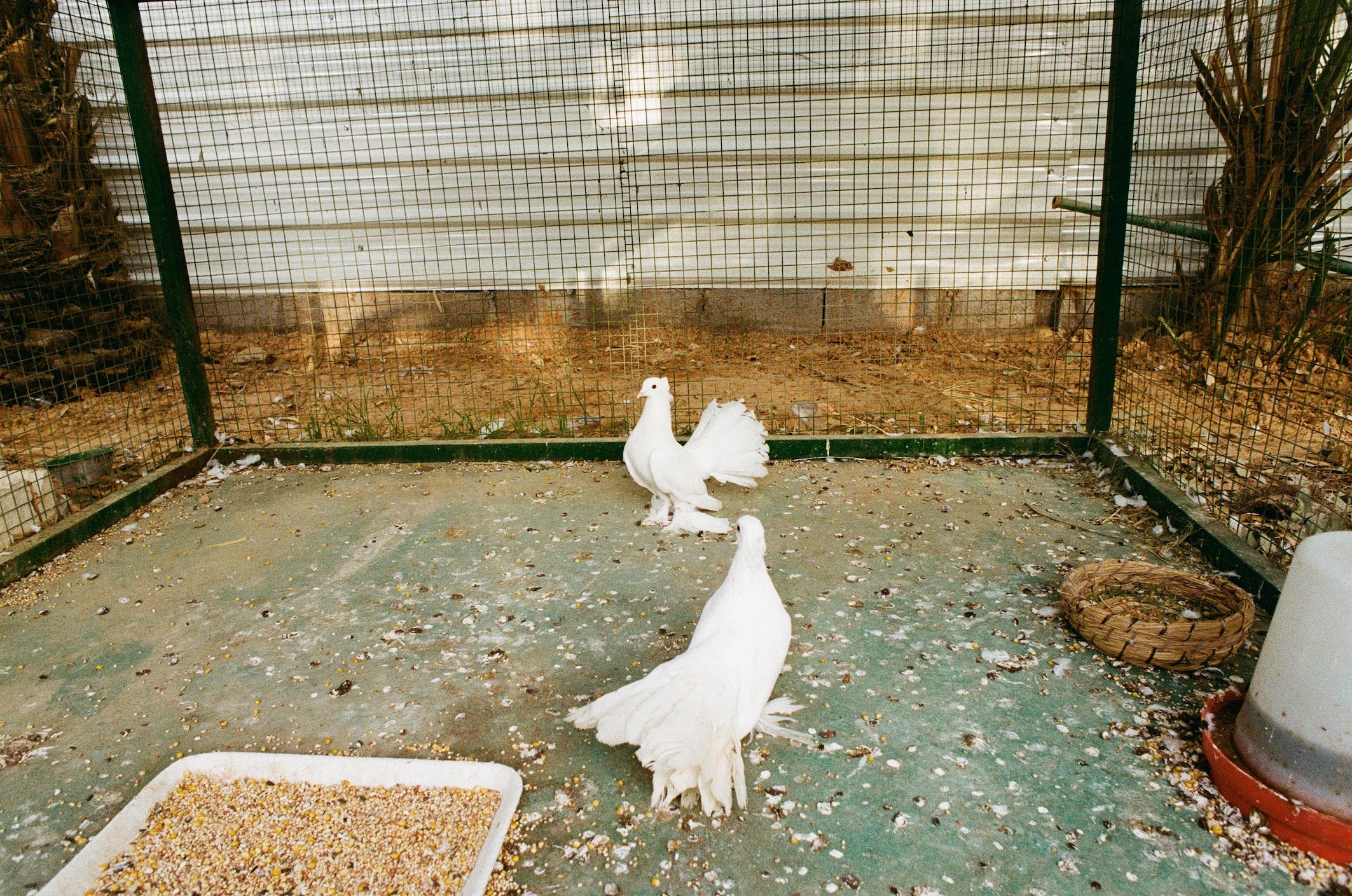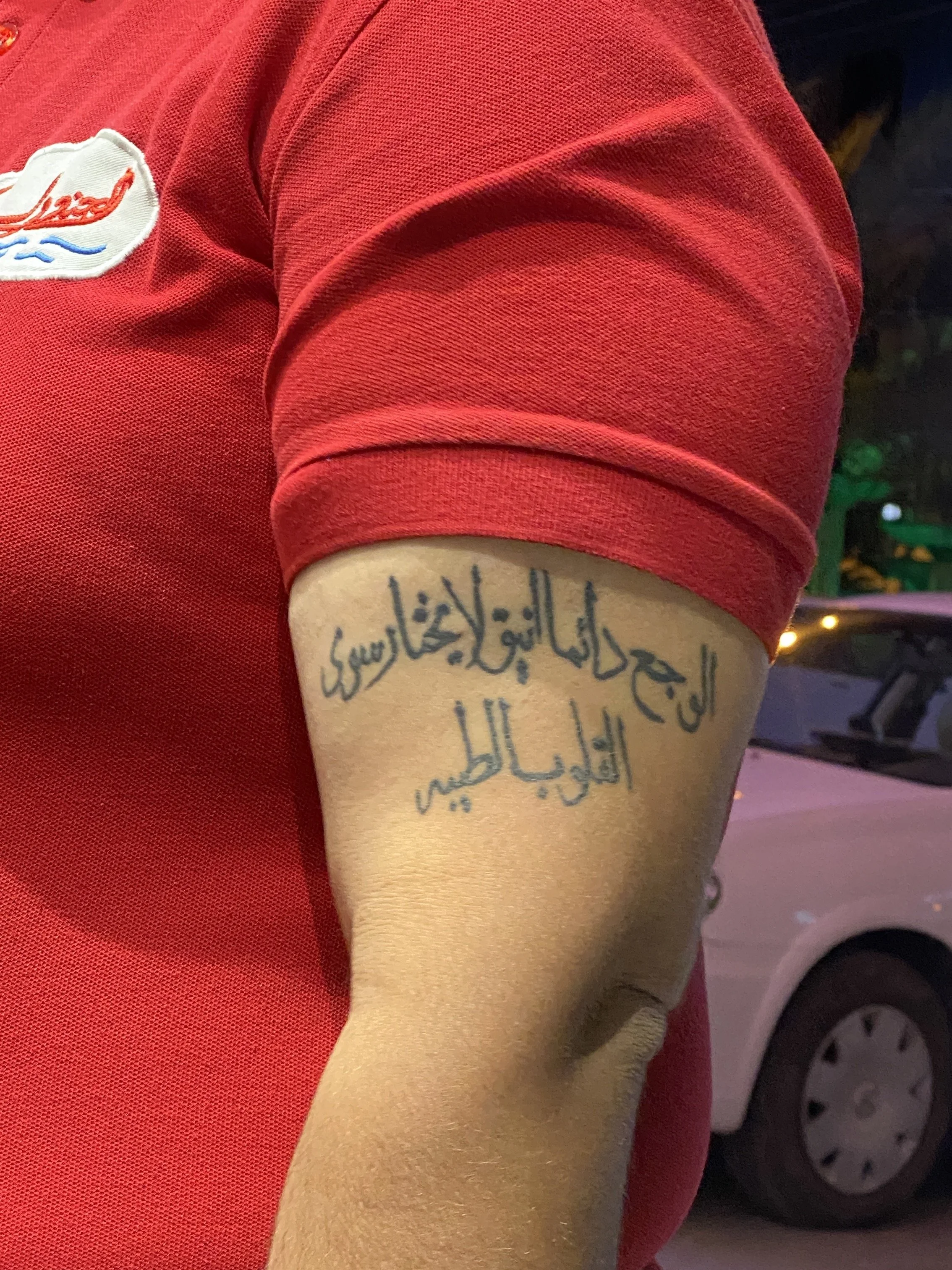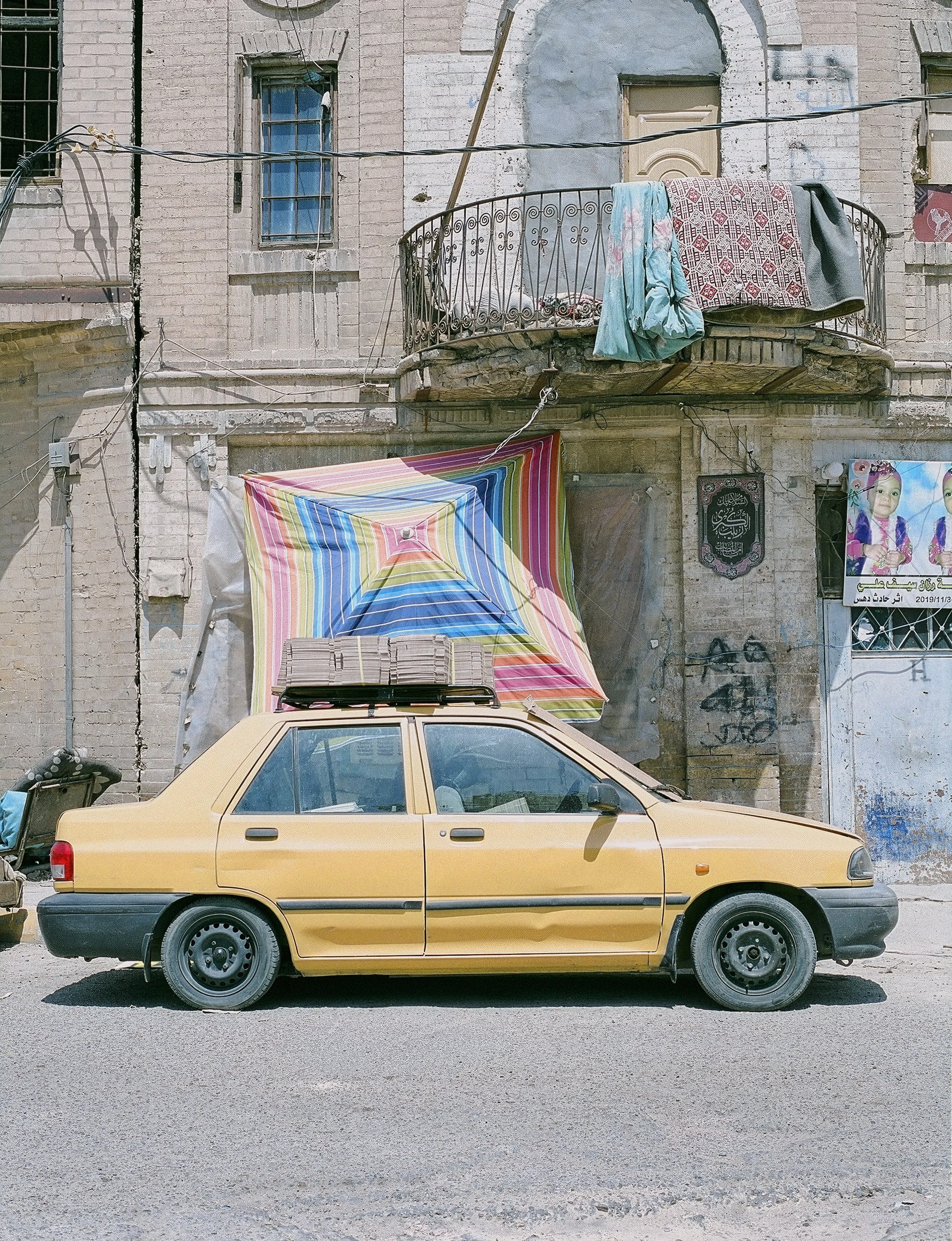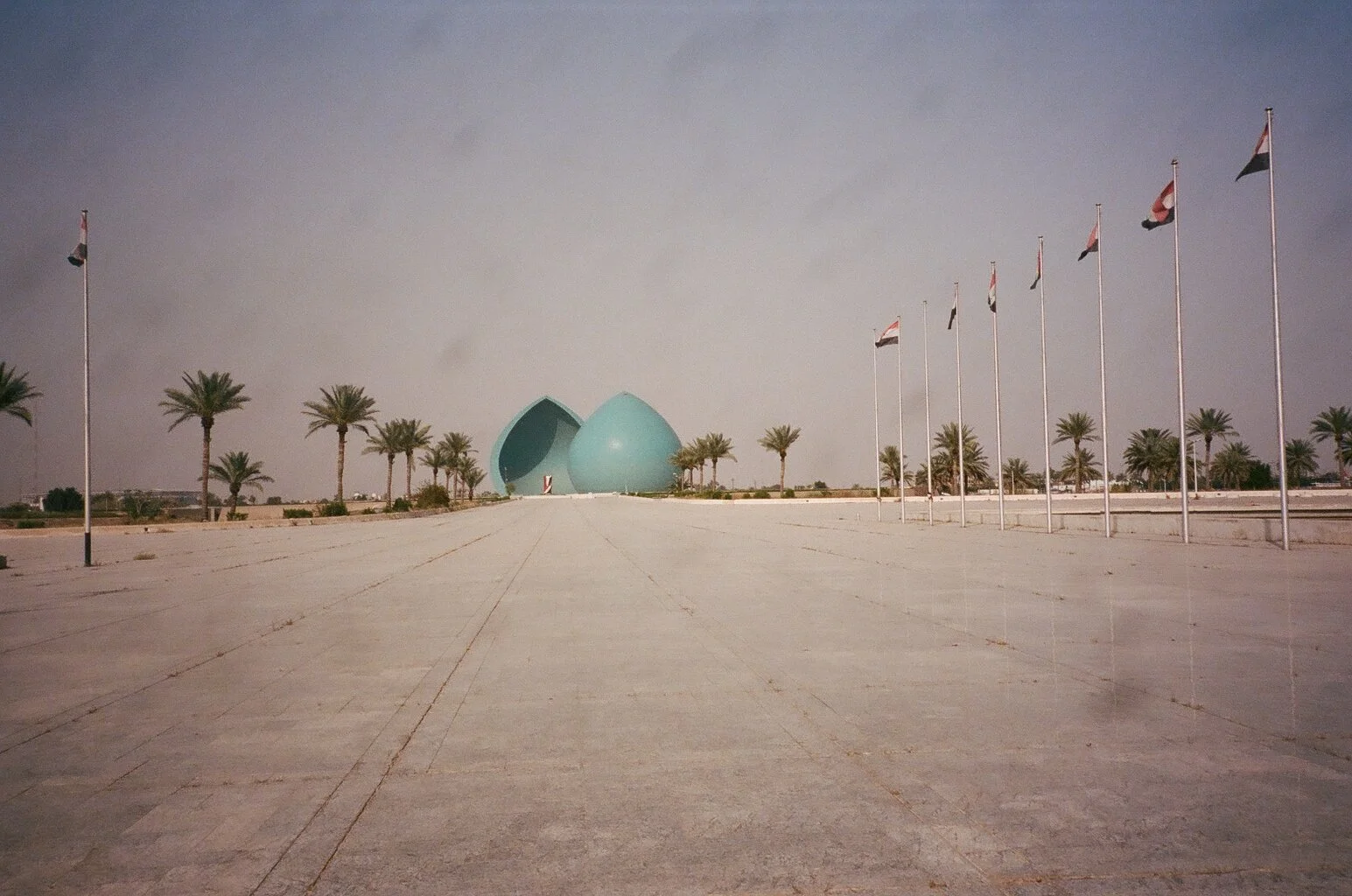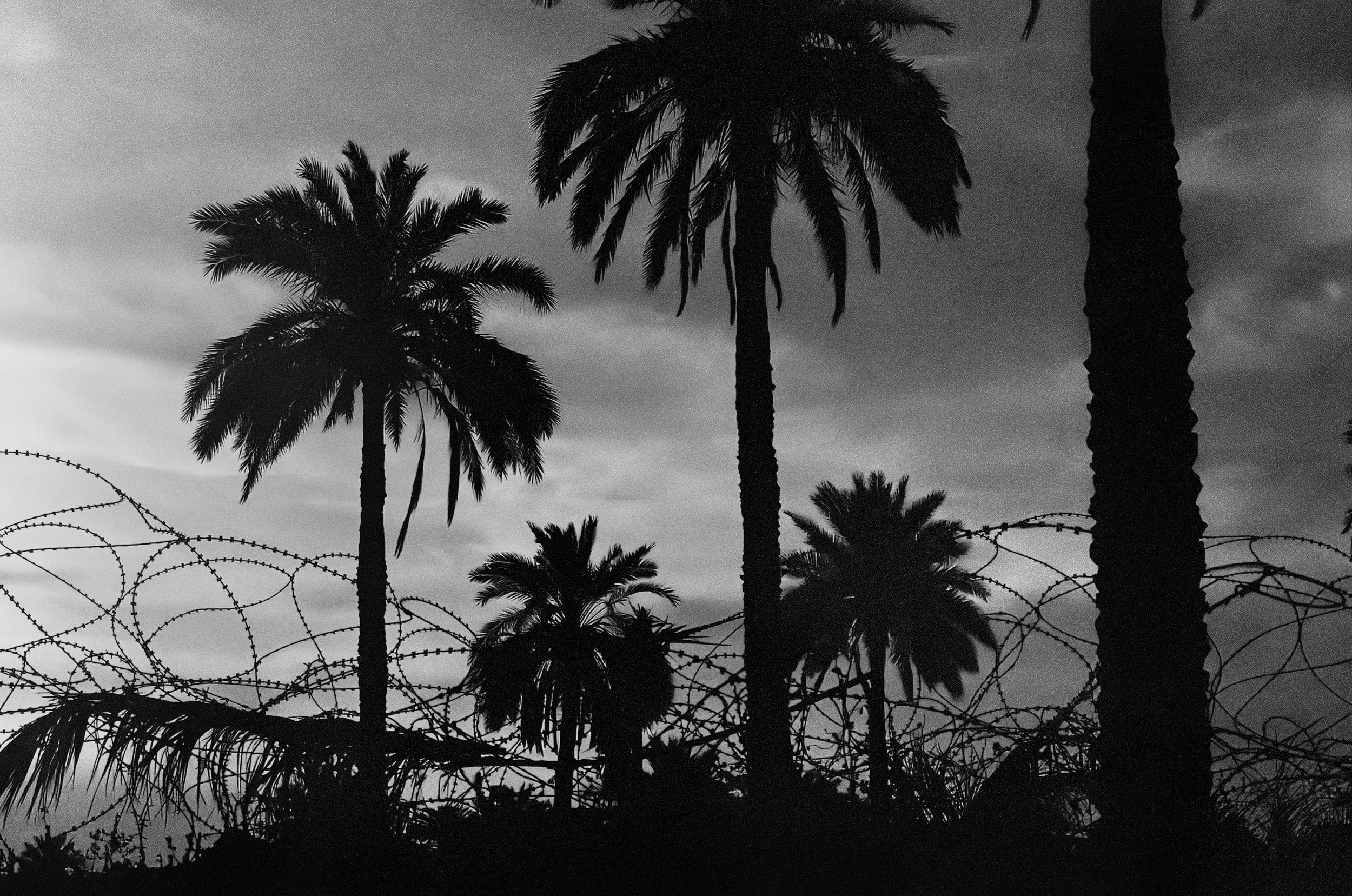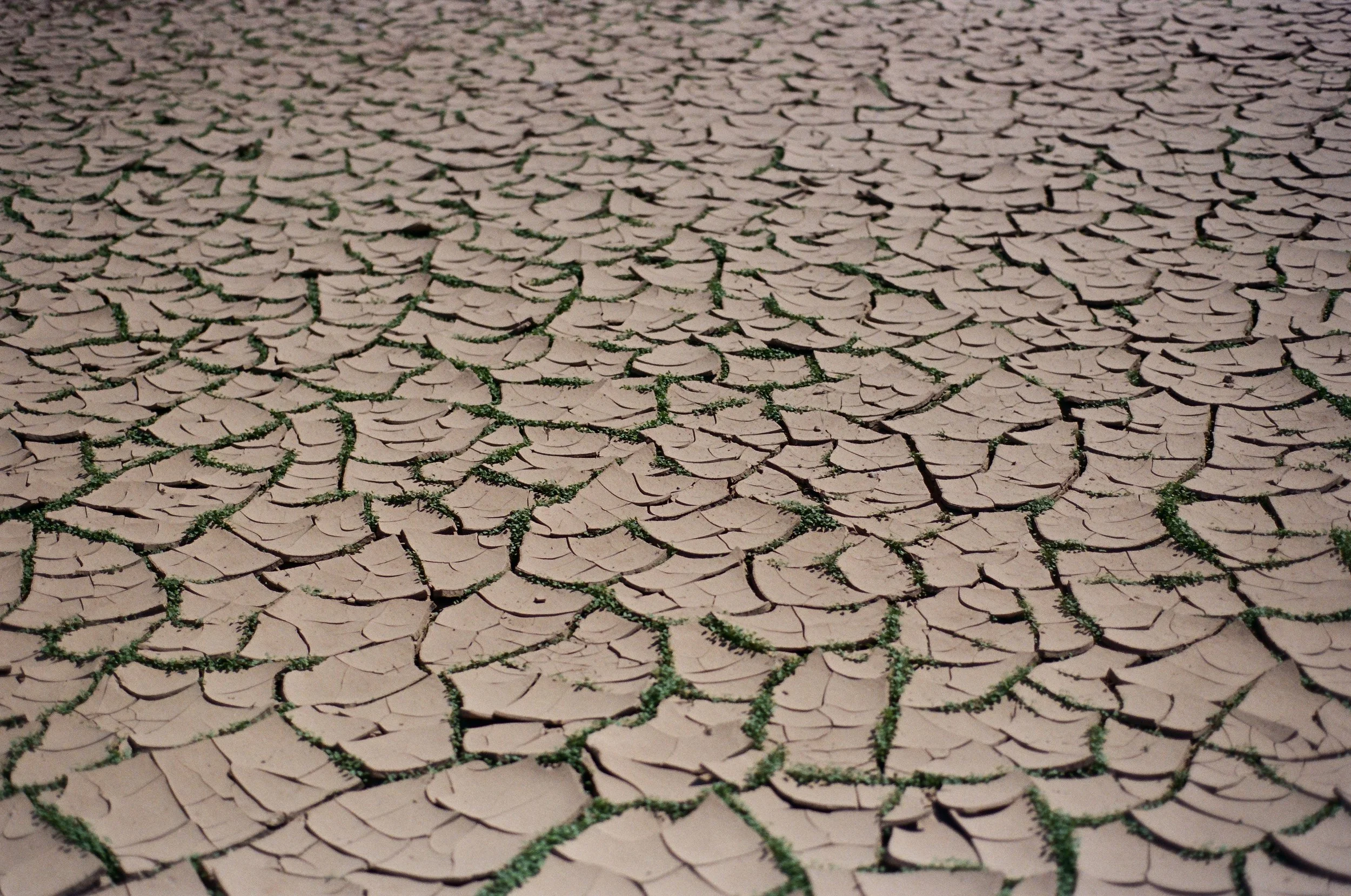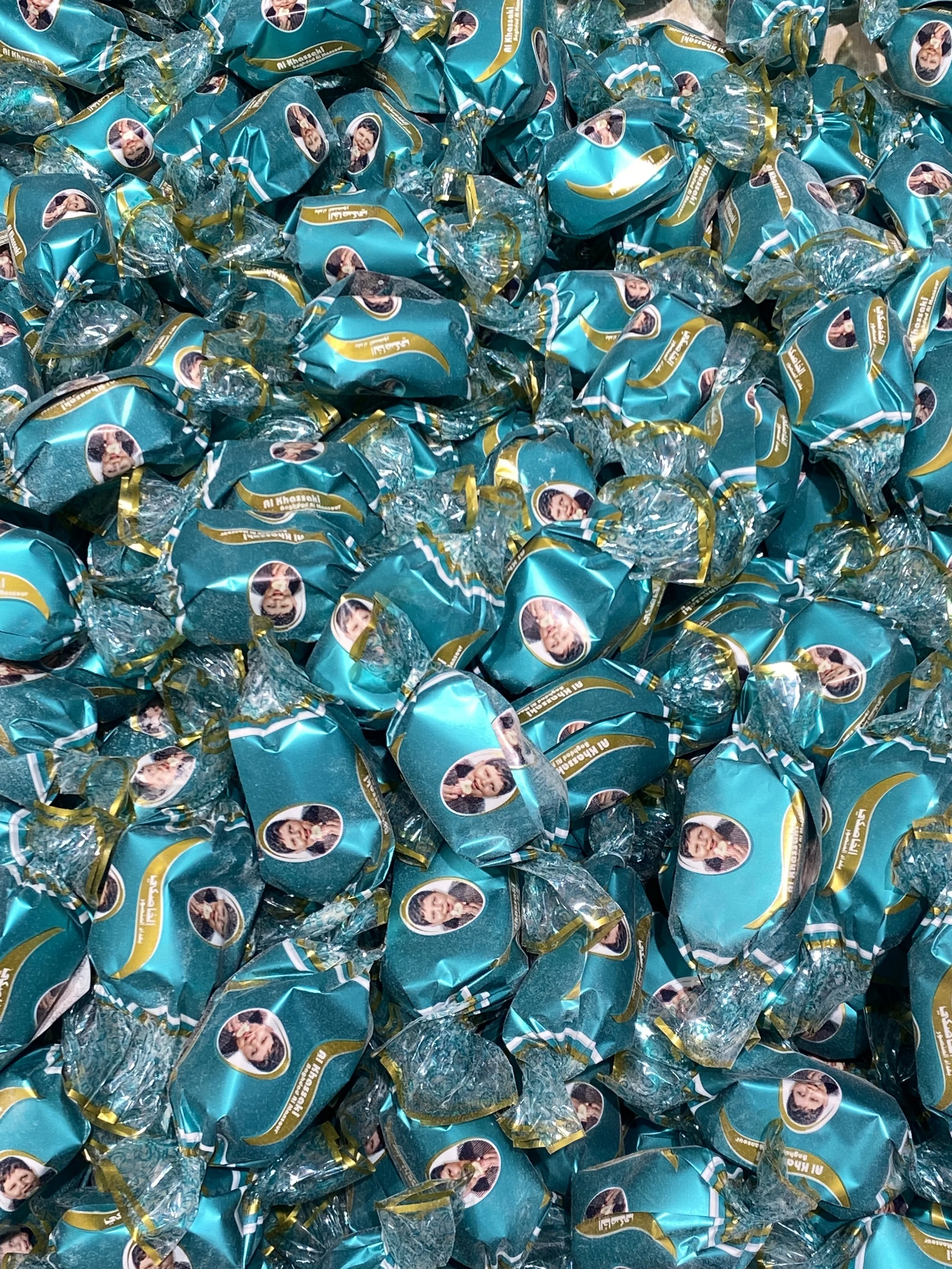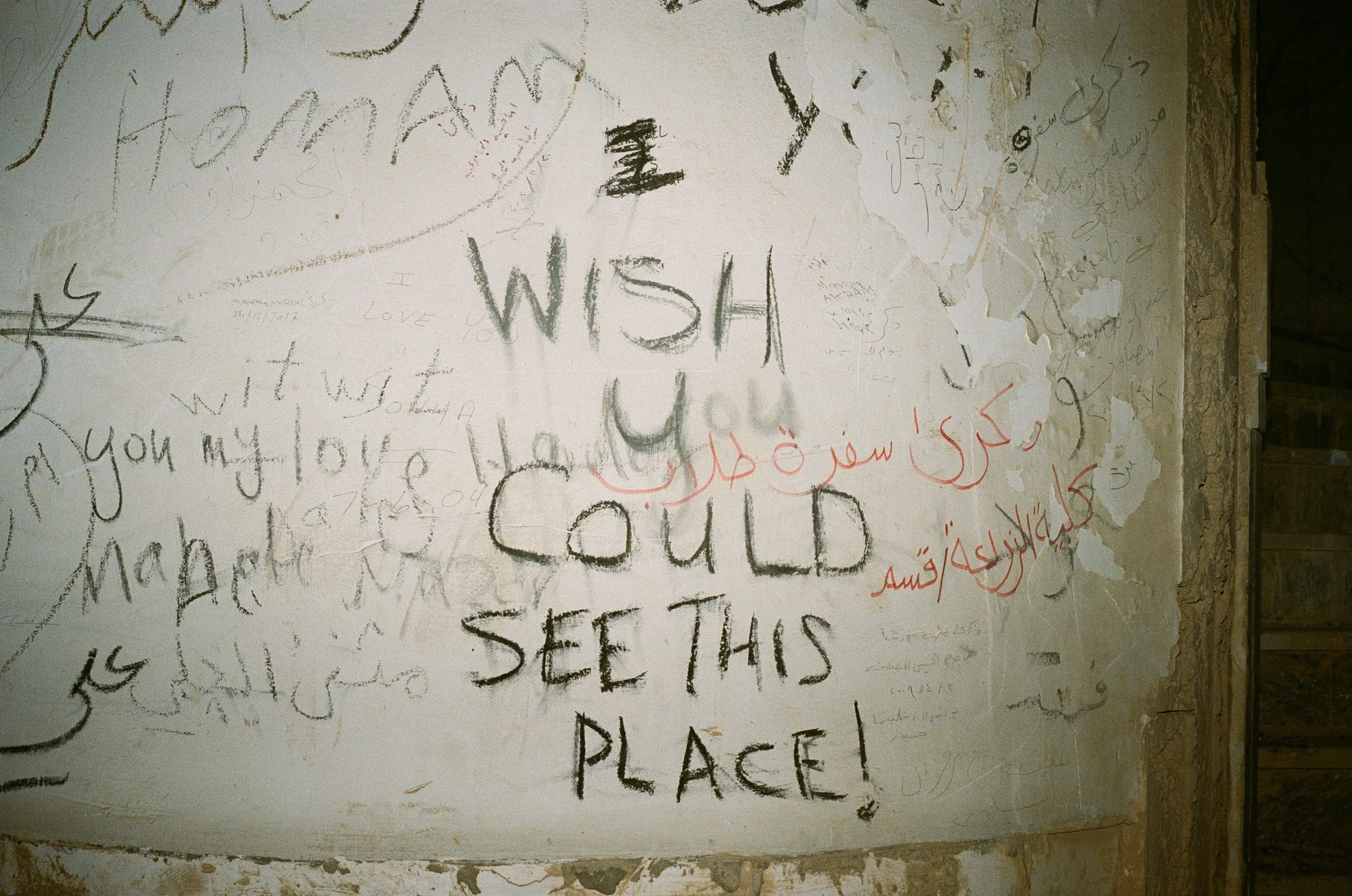Cheb Moha Shows Us Home: A Visual Diary of Return
Photos & Poetry by Cheb moha / Words by Nour daher
When Cheb Moha sent me his photographs from Baghdad, I opened them one by one, slowly, as if each image carried a breath from somewhere I’ve never been, yet somehow deeply known. There was something in them that felt like home, or the memory of one. Taken across several trips to Iraq over the past few years, they unfold like notes on time and return. A revisiting to the warmth and dissonance that come with going back to a place that you’ve left but it has never entirely left you. Through his lens, Baghdad is not fixed; it’s fluid and alive. Soldiers pause for a portrait. Men reveal tattoos that read like confessions. Cassette tapes stack into towers of memory. Living rooms hum with tenderness while being suspended in stillness. A graffiti promise — “we will see beautiful days” — echoes as the ancient walls of Babylon, which stand in quiet defiance.
“WHAT HOME LOOKS LIKE IN MY HEAD VISUALLY”
“THIS MONUMENT REMINDS ME OF THE GAME TEMPLE RUN, THIS THING IS MASSIVE, ZIGGURAT RUIN OF UR, JUST WEST OF BAGHDAD, BUILT BY KING KURIGALZU”
“INSHALLAH WE DO SEE BEAUTIFUL DAYS, THIS WAS SOMEWHERE ON A BUILDING BY THE TIGRIS RIVER”
“IN THE ROOM WHERE MY GRANDPARENTS SLEPT الله يرحمهم”
One of Moha’s notes reads:
“A man without a land is an island…even the greatest of escapes takes us back to our homeland, what we love first.”
His words move alongside his images, walking between the visible and the remembered. This negotiation between what remains and what transforms creates a visual diary of longing, inevitable return, and love for the homeland.
“I come from the most magical land, you make me dream forever
& thank you for making me dream my love letter to you
I can't get tired of lying around in the sunshine and going out to watch the rain
life is long and far away, being home makes everything feel so near.”
A man’s arm bears a tattoo that reads the Arabic of “Pain is always tasteful, it always chooses the kind-hearted.”
“A TAXI IN FRONT OF TRADITIONAL IRAQI HOUSE STYLE”
“A man without a land is an island,
you leave the man stranded you push him away from land to the sea shore
man is between land and water
man cannot be isolate, deserted on an island
even the greatest of escapes takes us back to our homeland (what we love first).”
“AT A MINISTRY TO GET PAPERWORK DONE. THE MEN GUARDING THE ENTRANCE”
“IN BABEL MY SISTER ZAINAB SWIMMING IN THE EUPHRATES”
“BARB WIRE AND PALM TREES”
“I'll fly from my heart far away for you,
you will always be, you will always return
if I could go back
is the distance worth the run
to love, to cry
the nearing, and the fleeing
feeling the oppression of failing.”
“FERTILE LAND , IN URUK”
Through his lens, we not only see Baghdad but taste it. In his notes, Moha recalls his daily ritual: “When I am in Baghdad, I try to have this every morning for breakfast, gamar and dibs. Gamar is a cream made from Iraqi water buffaloes, kind of like ashta, and dibs is date syrup. One of the most delicious combinations ever.”
Other images trace moments of sweetness and nostalgia — Al Khassaki with its unmistakable branding, min al sama, Iraq’s famous and beloved nougat, plates of baqilla bil-dehn, soaked bread, fava beans, and eggs, “the breakfast of champs” and the irresistible kahee layered with cream and honey, always served with a glass of buffalo milk.
“SOAKED BREAD, FAVA BEANS AND EGGS — BREAKFAST OF CHAMPS!”
“AL KHASSAKI WRAPPED MIN AL SAMA”
“IN AN ABANDONED CASTLE . REALLY WISH PEOPLE WOULD SEE THIS PLACE”
Cheb Moha is a multidisciplinary creative working across photography, design, and music. As the founder and creative director of Shabab, he explores the intersections of culture, sport, and community through clothing, sound, and spatial experiences. His work explores visual storytelling and the ways design and culture can shape identity and connection. As a DJ, he curates sets that move between genres and eras, reflecting his deep engagement with sound and cultural narratives. In 2023, he was recognized in Vogue Business’ 100 Innovators list for his contribution to shaping contemporary creative culture in the Middle East.


